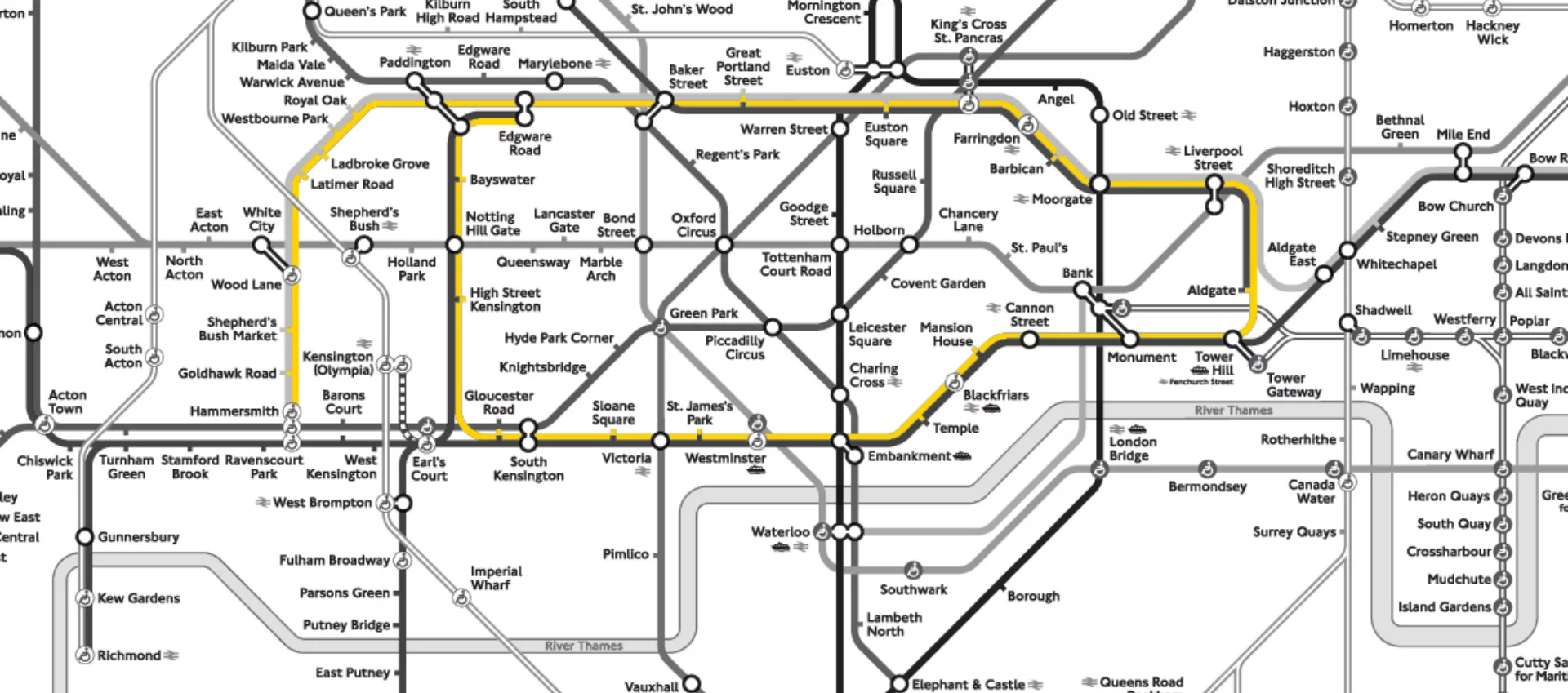You’re probably here because of our list, An Interesting Fact About Every London Tube Station.
Now, like the Underground itself, the list is pretty huge. And also like the Underground, we thought we’d make it easier to navigate – so we also created a little splinter list dedicated to stations on The Circle Line. A list which, we decided to start at the perfectly arbitrary starting point of Paddington…
Paddington
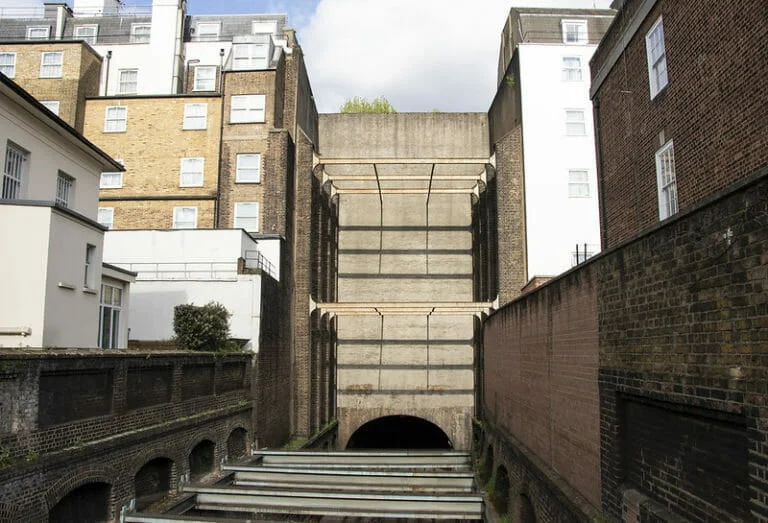
Jeremy Segrott / Flickr
The track running towards Bayswater passes under 23-24 Leinster Road – a facade constructed to match neighbouring terrace houses. disguising where the original house was demolished to allow a gap in the tube system for steam trains to er…let off steam.
Royal Oak
Named after a nearby pub (still there, but now called The Porchester).
Westbourne Park
First station to be demolished. It was relocated in 1871.
Ladbroke Grove
Was originally called Notting Hill, but the name was changed to avoid confusion with Notting Hill Gate. There’s now a movement to change the name to Portobello Road, despite the fact that it’s not on Portobello Road. It’s on Ladbroke Grove.
Latimer Road
Is actually located half a kilometre away from Latimer Road.
Wood Lane
Newest station on the network, opened in October 2008.
Shepherd’s Bush Market
Until 2008, it was called Shepherd’s Bush until it was renamed to avoid confusion.
Goldhawk Road
The line running through Goldhawk Road station was active as early as 1864, yet no station opened there until 1914.
Hammersmith
Technically, it’s two stations – one District/Piccadilly, one Hammersmith & City/Circle. And to get from one to the other without walking would require a minimum of 10 stops and 3 changes.
Edgware Road
Has a “living wall” wall of plants outside the station, the only one in the underground network.
Baker Street
Has the most platforms of any tube station – 10.
Great Portland Street
Despite having three lines run through it, it only has one pair of tracks, making it one of the most intensely used parts of the network.
Euston Square
Was the place that the very first piece of work on the underground – or any underground railway on earth – took place. A shaft was sunk in January 1860 there.
King’s Cross St Pancras
Has the shortest lift shaft on the network, at just 2.3 metres.
Farringdon
Originally designed to transport livestock to Smithfield market – there are still cattle ramps onto the street West Smithfield for this purpose.
Barbican
The tube’s first rail disaster happened here. 4 people died …and the trains were running again within half an hour.
Moorgate
Has a virtually unknown second underground line which starts here – the Northern City Line runs from Moorgate to Finsbury Park.
Liverpool Street
Built on the original site of the Bethlehem (Bedlam) mental asylum.
Aldgate
Is built directly on top of a vast plague pit, where thousands of bodies are apparently buried. No-one knows quite how many.
Tower Hill
King Henry VIII beheaded noble traitors to the crown and two of his wives here. Not like, in the station, but next door to it.
Monument
It’s original name, Eastcheap, lasted precisely one month before it was changed to Monument.
Cannon Street
Named after Cannons, a vast house built on the site in 1724 at the cost of £28m (adjusted for inflation). It was demolished and sold off brick by brick 20 years later.
Mansion House
Has all five vowels in its name.
Blackfriars
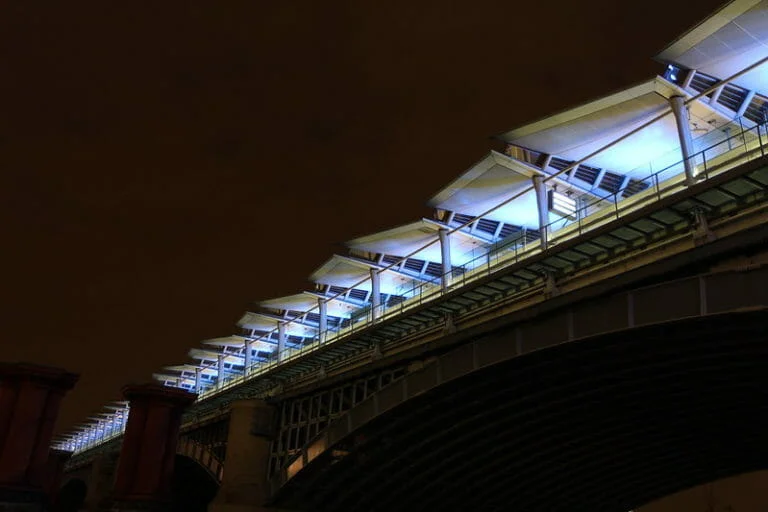
Jonathan Beeston / Flickr
In January 2014 the Blackfriars Railway Bridge became the world’s largest solar-powered bridge, having been covered with 4,400 photovoltaic panels providing up to half of the energy for the station.
Temple
On the columns at Temple station, there are small temple-shaped emblems at the bases.
Embankment
Has a huge, empty substation attached to it, abandoned since 1957. Called ‘Pages Walk’ it’s behind a blast door in the station, and is so large it’s been proposed as a possible nightclub location.
Westminster
Excavations for creating the deep level Jubilee line platforms caused Big Ben to move 35millimeters. Any more, and the tower would have cracked and possibly collapsed.
St James’s Park
Is a Grade 1 listed building, making station improvements considerably difficult.
Victoria
Plays a key role in Oscar Wilde’s ‘The Importance of Being Earnest’ – the main character was discovered as a baby in a handbag in the station.
Sloane Square
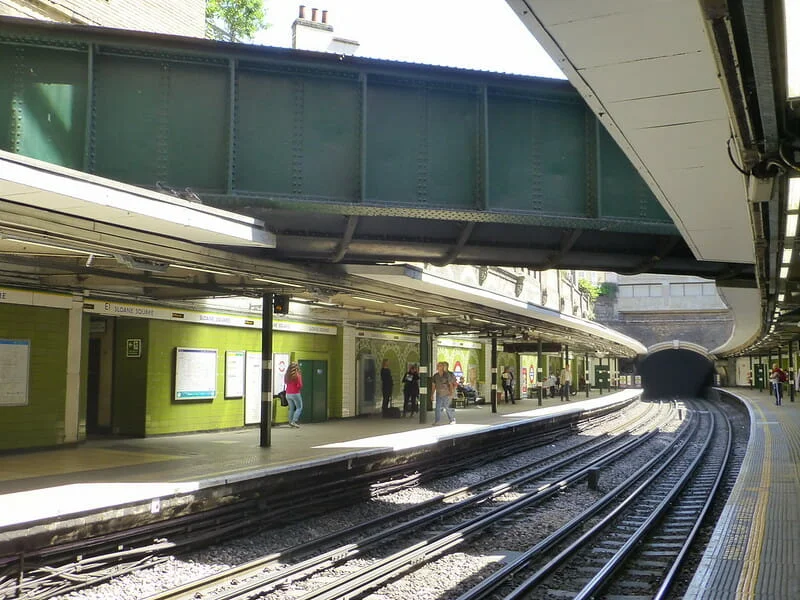
City Transport Info / Flickr
The River Westbourne runs through the station – it was redirected through its own little bridge suspended over the main platform.
South Kensington
Between South Kensington and Knightsbridge, the tube steers away from following the road above it in order to avoid a large plague pit.
Gloucester Road
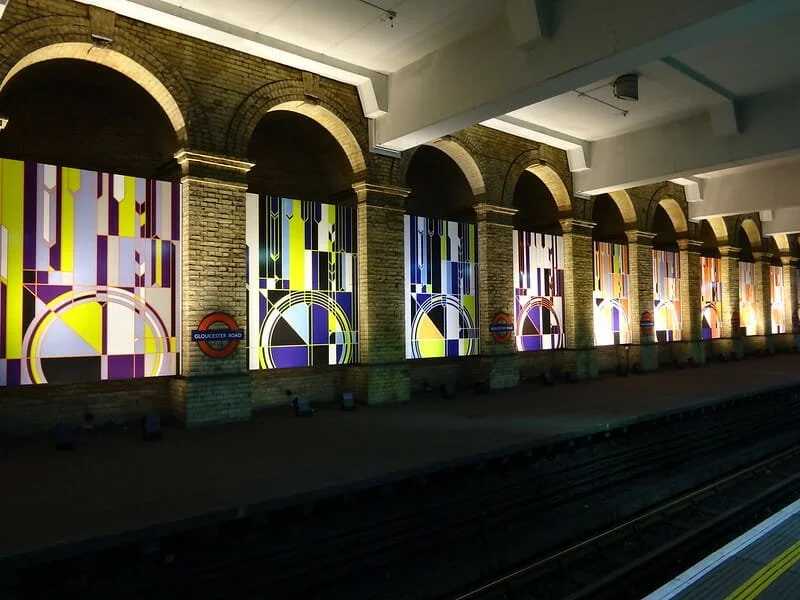
Ian Wright / Flickr
Has a disused platform that’s used as an art exhibition. (Technically making it a used platform.)
High Street Kensington
Once had a waiting room for passengers who didn’t fancy the platform. This was changed into a break room for drivers.
Notting Hill Gate
The reason it’s called Notting Hill Gate is because it was literally a gate: it used to be a toll road.
Bayswater
Was originally called Queen’s Road (Bayswater), but the name was changed to avoid confusion with Queensway, which was also called Queen’s Road. And the kicker? There is no Queen’s Road in Kensington.
Check out the other lines right HERE.
